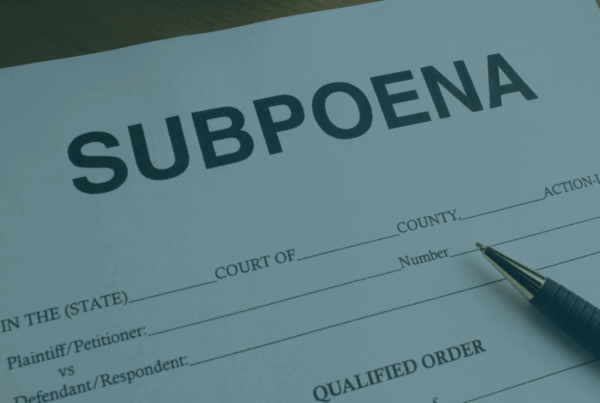Managing workers’ compensation claims involves understanding the role and importance of record retrieval. Record retrieval is critical in ensuring that the injured worker and the employer (or, in many cases, the insurance company) have the proper documentation to support the alleged claims. This is a key determining factor in whether the claims are supported or refuted.
Medical Records
An accident, injury, or illness occurring within a worker’s scope of employment is typically the basis of claims alleged against the employer. These claims are analyzed and evaluated by corresponding medical records, which describe the details of the injury and set forth the treatment required. These records include physician reports, diagnostic tests, surgery information, prognosis reports, progress notes, and treatment plans. This information is vital for establishing the link between the injury surrounding the workplace incident and evaluating and determining the prognosis, treatment plan, and the timeframe for return to work.
Incident Reports
Whenever there is an on-the-job accident or injury, employers must complete an incident report that documents and details the specific event or accident that led to the worker’s injury. This is often the primary data to establish the factual events and circumstances of the injury. Supervisors or managers typically complete these reports and sometimes include detailed information surrounding the accident. They can consist of witness statements, safety protocol compliance, and whether the accident or injury could have been prevented.
Witness Statements
Injuries involving an injured worker often include other workers or individuals who witnessed the injury or accident. Testimonies from these individuals can corroborate (or negate) the injured worker’s claim. These statements, which often include the time of injury, the nature of the accident, the work environment, and the worker’s job duties, can help support the injured worker’s claim.
Employment Records
Employment records are crucial to establishing the worker’s essential job duties, salary, work hours, nature of work, worker patterns and behavior, and work environment. These records can help clarify whether the injury occurred within the scope of employment and while performing job-related tasks. These records can include, but are not limited to, job descriptions, pay stubs, logs, work schedules, driving records, incident reports, and other documents surrounding the injured worker’s scope of employment.
Employment & Insurance Company Records
Records from the employer and their insurance company can provide a clear picture of the nature of work, including essential duties that can either support or dispute a claim. These documents typically include safety procedures, work environment, company policies, prior workers’ compensation claims, and information about how the employer deals with similar situations. For example, an employer’s response to how incidents, accidents, or injuries occurred, including their reports, safety audits, and previous claims handling, can help an injured worker predict how the employer will respond to their claim or corresponding challenges.
Vocational and Rehabilitation Records
After an injury, medical and vocational professionals will often prescribe a mental, physical, or vocational rehabilitation regimen. These records are vital, especially when the worker is in a return-to-work program. The documentation can help chronicle and determine whether workers can return to their previous positions or qualify for a different role. These records can include the worker’s present mental, physical, and vocational capabilities (or inabilities), rehabilitation progress, and whether there is a need for retraining or job modification.
How Records Impact Workers’ Compensation Cases
Once records are obtained, reviewed, and evaluated, it is important to understand how to use them to navigate the worker’s compensation claim.
Causality
Establishing causation in workers’ compensation claims generally refers to making the connection between the accident, injury, or illness and the worker’s job duties or work environment. Causality is primarily about proving that the injuries were caused by their workers’ job duties or the environment. This will often be a determining factor in whether an injured worker will qualify for and receive benefits.
Access to Benefits
In workers’ compensation cases, access to records is a key element in whether an injured worker will receive benefits. Accurate and timely records can determine the benefits the injured worker is entitled to, including medical expenses, disability benefits, compensation for lost wages, and rehabilitation programs.
Preventing Fraud and Frivolous Claims
A concern among employers and insurance companies involves the fraudulent or frivolous claims surrounding an injury. Records play an important role in preventing fraud because they provide clarity and verifiable evidence regarding the alleged claims. Employers and insurance companies use records to verify the workers’ injuries’ legitimacy and ensure no fraud or exaggerated claims.
Summary
Record retrieval plays an important role in workers’ compensation cases. Records provide the necessary evidence to establish or dispute claims and support or refute legal arguments. Records give the undeniable facts surrounding the accident, injury, or illness. Records can also address an employer’s job duties, work product, environment, and incidents. This information helps establish causation, prove or deny challenges, and establish the benefits that the injured worker will be afforded.







